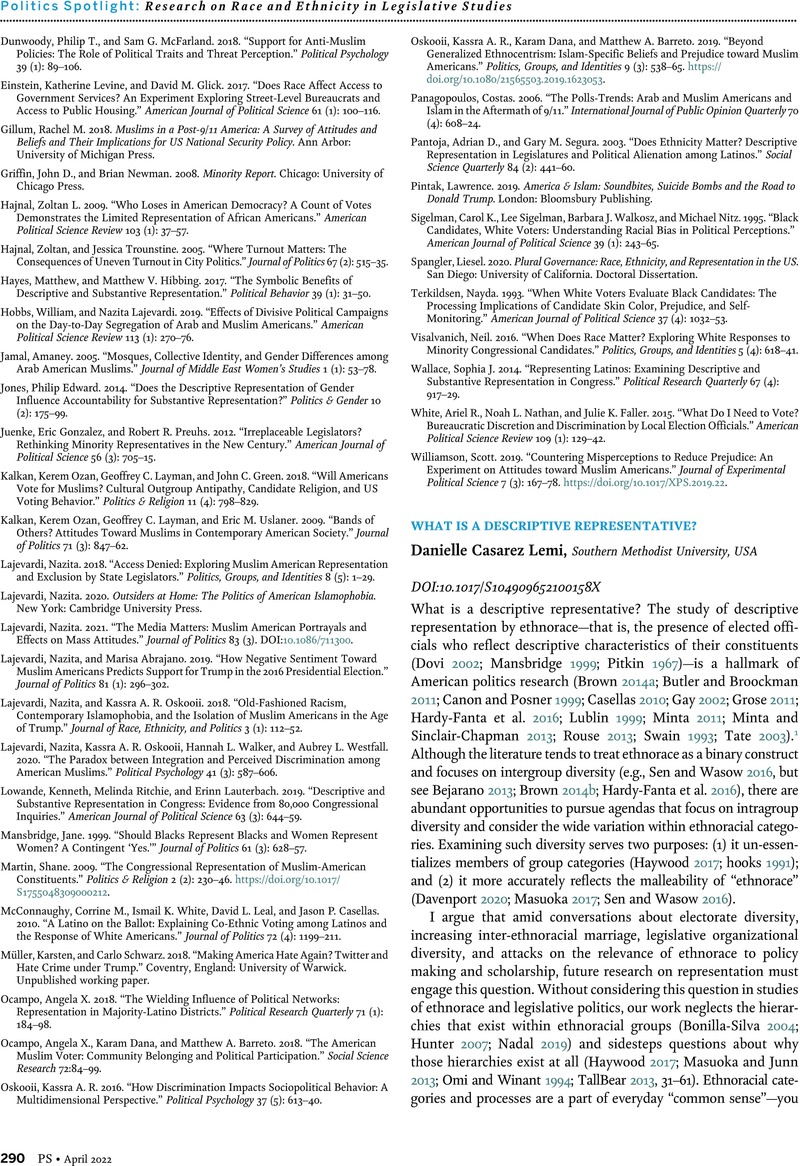Crossref Citations
This article has been cited by the following publications. This list is generated based on data provided by Crossref.
Paulis, Emilien
Pilet, Jean-Benoit
Rojon, Sebastien
and
Vittori, Davide
2024.
Fair Enough? Mini-Public Composition and Outcome Acceptance from the Maxi Public.
Journal of Deliberative Democracy,
Vol. 20,
Issue. 1,
Flexon, Jamie L.
D’Alessio, Stewart J.
and
Stolzenberg, Lisa
2024.
When Avoidance Backfires: Interracial Officer-Citizen Dyads and the Consequences for Fleeing Suspects.
Race and Justice,
Weissman, Anna
2024.
Descriptive Representation in an Era of Polarization.
The Journal of Politics,
Arora, Maneesh
Kim, Hannah June
Masuoka, Natalie
and
Stout, Christopher T.
2024.
How Crises Shape Interest in Elected Officials of Color: Social Media Activity, Race and Responsiveness to Members of Congress on Twitter.
Political Communication,
p.
1.
Molina Mendoza, Alejandro
Palomeque Rodríguez, Horacio Gabriel
and
Ulloa Tapia, César
2025.
¿La voz del pueblo o la voz de los partidos? Representatividad política, edades y comportamiento electoral en las elecciones subnacionales ecuatorianas (2009-2023).
Análisis Político,
Vol. 37,
Issue. 109,
p.
207.



